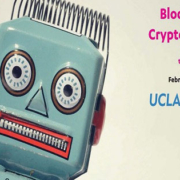49 Shades of Grey: SEC Remarks Bring Some Welcome Crypto Clarity
By: Rob Griffitts
Earlier today, William Hinman, the Director of Corporation Finance at the SEC, made remarks at the Yahoo Finance All Markets Summit: Crypto that have crypto entrepreneurs and investors breathing a sigh of relief – namely, that ether, the second-largest cryptocurrency by market cap behind bitcoin, is not a security.
This wasn’t news to securities lawyers, because ether no longer passes the Howey test, as I pointed out earlier in the week. I didn’t get into the reasoning for my position, but if you’re interested, Peter Van Valkenburgh lays out the argument very well.
What I want to bring to your attention here is the helpful guidance Hinman provided in his remarks (I really do think they’re helpful, despite the title, which I couldn’t resist). The guidance is very welcome because, although the SEC has been very clear and consistent in its position that cryptocurrencies issued in ICOs are securities, the agency has not provided much else in the way of guidance. Chairman Clayton occasionally made what I considered reassuring remarks, wherein he consistently reiterated that a significant factor is whether “the thing” (ie, the network on which the tokens will operate) has been built, or not. In the former case, they’d be securities; in the latter case, perhaps not. But beyond that, we’ve not had much to rely on except seventy years of case law, which is only of marginal help if you don’t know what the agency’s current thinking is, especially since all of those cases predate the blockchain.
Now, thanks to Hinman’s comments, we have more to chew on. Granted, there’s no relief in his words for those wishing to conduct an ICO in the US and avoid the securities laws. But for those companies whose business model provides for the sale or issuance of tokens other than in connection with a financing – very much a grey area – his comments provide useful guidance.
In fact, I think now we’ll begin to see the SEC issue ‘no-action letters’, which are responses to requests made of the SEC by companies that want to engage in certain activity, but prior to doing so, want assurance from the SEC that the agency won’t recommend enforcement action. The no-action letters give comfort not only to the party making the request, but also provide helpful guidance on which other market participants can rely. In other words, it’s another way for the SEC to define the regulations. As a side note, if you intend to issue tokens and don’t believe they qualify as securities, get in touch – perhaps we can help you make a no-action request of the SEC.
Back to Hinman’s factors. As you read through these, keep in mind that this is not an exhaustive list. The determination of whether a token is, or is not, a security depends on the facts and circumstances of each particular case.
From his remarks:
“What are some of the factors to consider in assessing whether a digital asset is offered as an investment contract and is thus a security? Primarily, consider whether a third party – be it a person, entity or coordinated group of actors – drives the expectation of a return.
- Is there a person or group that has sponsored or promoted the creation and sale of the digital asset, the efforts of whom play a significant role in the development and maintenance of the asset and its potential increase in value?
- Has this person or group retained a stake or other interest in the digital asset such that it would be motivated to expend efforts to cause an increase in value in the digital asset? Would purchasers reasonably believe such efforts will be undertaken and may result in a return on their investment in the digital asset?
- Has the promoter raised an amount of funds in excess of what may be needed to establish a functional network, and, if so, has it indicated how those funds may be used to support the value of the tokens or to increase the value of the enterprise? Does the promoter continue to expend funds from proceeds or operations to enhance the functionality and/or value of the system within which the tokens operate?
- Are purchasers “investing,” that is seeking a return? In that regard, is the instrument marketed and sold to the general public instead of to potential users of the network for a price that reasonably correlates with the market value of the good or service in the network?
- Does application of the Securities Act protections make sense? Is there a person or entity others are relying on that plays a key role in the profit-making of the enterprise such that disclosure of their activities and plans would be important to investors? Do informational asymmetries exist between the promoters and potential purchasers/investors in the digital asset?
- Do persons or entities other than the promoter exercise governance rights or meaningful influence?”
He goes on to provide additional “contractual or technical” considerations that can be used to determine whether the digital assets function more like a consumer item and less like a security. They are:
- Is token creation commensurate with meeting the needs of users or, rather, with feeding speculation?
- Are independent actors setting the price or is the promoter supporting the secondary market for the asset or otherwise influencing trading?
- Is it clear that the primary motivation for purchasing the digital asset is for personal use or consumption, as compared to investment? Have purchasers made representations as to their consumptive, as opposed to their investment, intent? Are the tokens available in increments that correlate with a consumptive versus investment intent?
- Are the tokens distributed in ways to meet users’ needs? For example, can the tokens be held or transferred only in amounts that correspond to a purchaser’s expected use? Are there built-in incentives that compel using the tokens promptly on the network, such as having the tokens degrade in value over time, or can the tokens be held for extended periods for investment?
- Is the asset marketed and distributed to potential users or the general public?
- Are the assets dispersed across a diverse user base or concentrated in the hands of a few that can exert influence over the application?
- Is the application fully functioning or in early stages of development?









